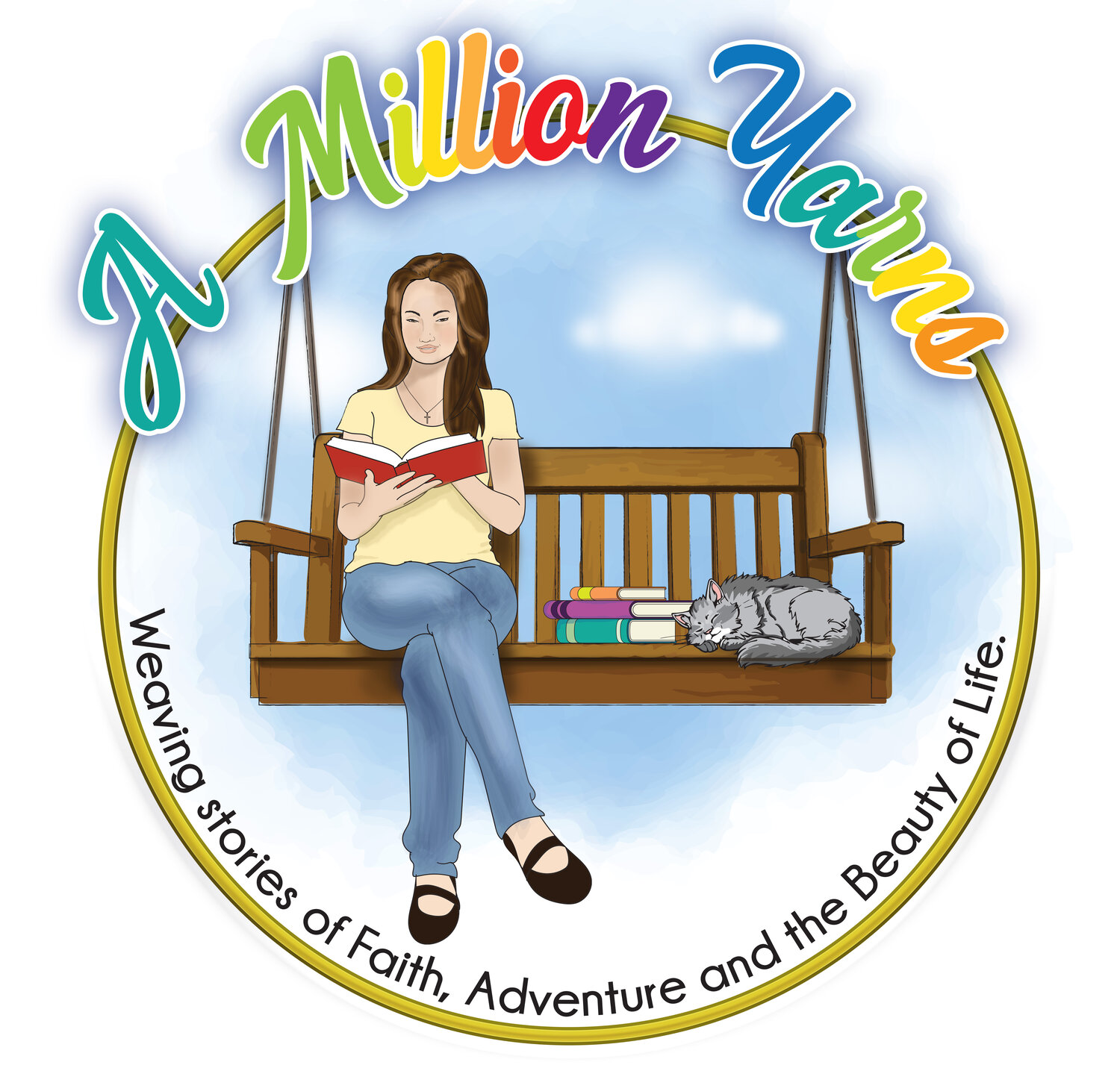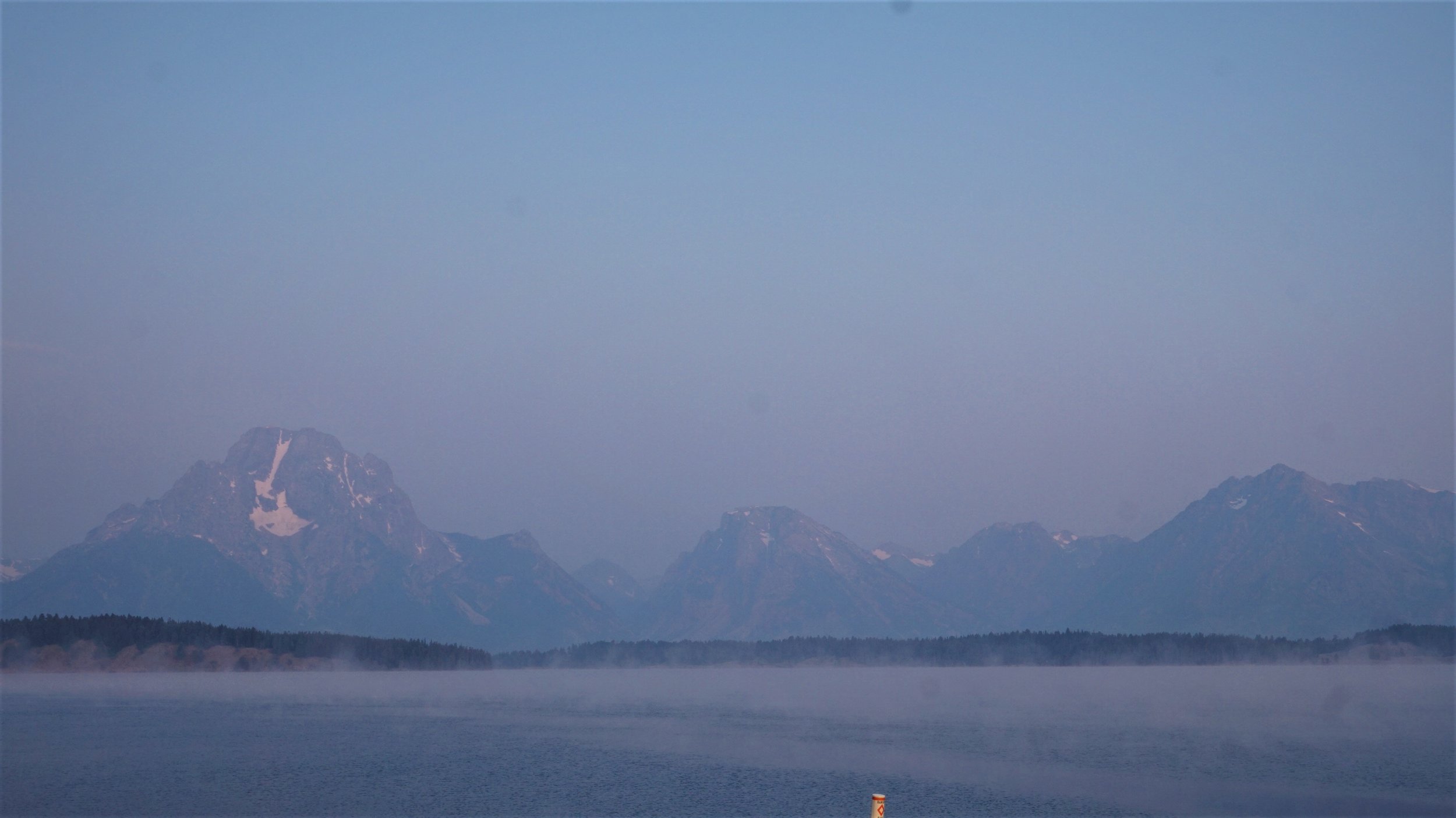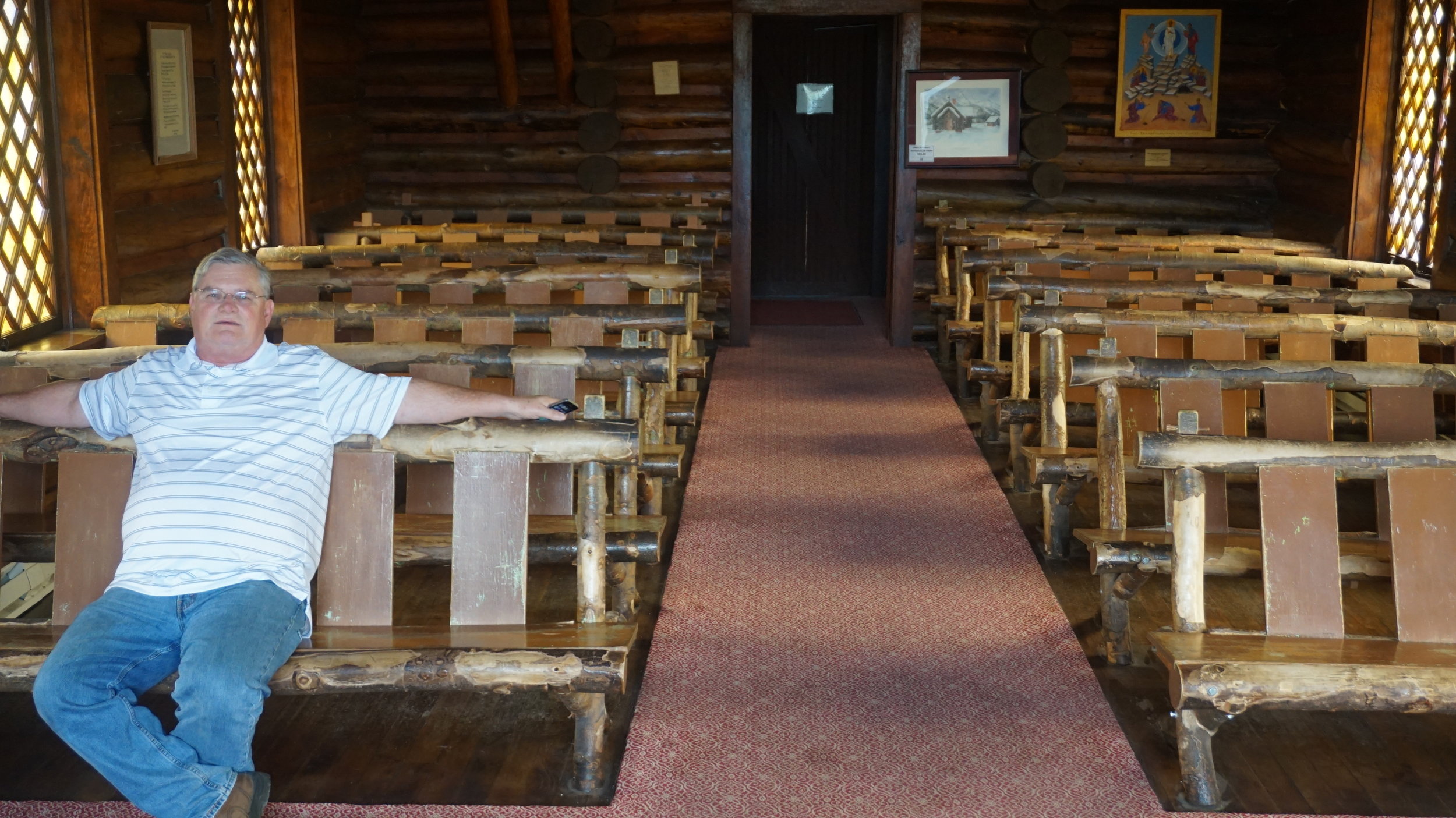Travel: Grand Teton National Park
It's 5:30 am and still dark the morning we head out from Old Faithful Snow Lodge in Yellowstone with a single purpose: to see the sun rise on the Grand Tetons.
Since we have no canister of bear repellent, and we've seen enough trees marked by bears to know they're plentiful and may be close by, we stomp our feet and talk loudly on our walk through the gravel parking lot.
As light breaks over the horizon, we spot an elk. I make a u-turn and we go back for pictures. Two other elk meander across the road into the grassy meadow as well. They graze with no apparent fear of us.
At Jackson Lake Dam, the sun, still sleepy, works to burn fog off the lake and wake up the mountains. We pull on our jackets, zip them and step into the forty-one degree August morning to take pictures.
Excited to see the gorgeous mountains from all angles, we stop and take photos at every single turn-out along the way. We learn the trunks of Lodgepole pine, the most common tree in the park, served Native Americans as tipi poles.
We discover a little community called Moose. Dornans Chuckwagon Grill awaits us. Perfect. It's 8:30 and we've worked up an appetite getting in and out of the car. It's still chilly out, fifty-two degrees, so we wonder about an open air restaurant, but we order a hefty breakfast: eggs, bacon and three sourdough pancakes, coffee for James and hot cocoa for me.
We happily eat. Okay, we're freezing, but the sun warms our shoulders and the hanging baskets of flowers and views of the mountains help get our minds off it.
A paved trail nearby leads us to the river where we learn about Menor's Ferry Historic District.
Bill and Holiday Menor, brothers from Ohio, settled in the area and homesteaded across the river from one another. Bill established a river crossing with his ferry in 1894. Many Mormon settlers came from Idaho and Utah in the 1890s, crossed the Snake River at Menor's Ferry and settled in an area now known as Mormon Row.
A covered bridge now houses the remains of the ferry.
Site of the ferry crossing.
As we travel on to Jackson Hole, we view Cascade Canyon and Teton Glacier.
And enjoy the abundance of wildflowers that flourish among the silvery gray-green sagebrush flats.
A hiker asks if we'd like our picture taken.
Jackson Hole looks exactly like what you'd expect in an old western town: wooden sidewalks, saloons, cowboy hats and moose and bears everywhere. Fortunately for us the animals are stuffed or carved.
Native Americans first occupied what is now Jackson Hole. In the early 19th century the Lewis and Clark expedition made their way through the area along with fur trappers who hunted the wildly popular beaver fur. By 1840 when beavers had been hunted nearly to extinction and their fur went out of vogue, many of the fur trappers found new work as guides for research expeditions through the Rocky Mountains.
By 1860 the U.S. Government became aware of the wild and beautiful area and a wave of government officials arrived to survey the land and evaluate it for potential economic value. Miners arrived in the area about 1870, but with little gold to be found that died out and by the 1890s, homesteaders began arriving.
Cattle ranching eventually led to dude ranches made profitable by the tourist who visited. After World War Two road trips became popular and Jackson Hole boomed. Now baskets of lovely petunias line the sidewalks and tourists shop for souvenirs.
At the entrance to the Jackson Town Square we read an interesting story about the elk antlers and Boy Scouts.
We walk the square and purchase our souvenirs, then rest while we eat a buffalo burger and onion rings before heading out.
Our next stop is the Chapel of the Transfiguration, a popular spot for photographers and weddings.This Episcopal church, built in 1925, still holds Sunday services from late May to early September.
Long ago settlers attended church here. Later, guests and employees of the dude ranches worshiped within its walls.
Another church nearby is the Chapel of the Sacred Heart. Built in the 1930s, it sits on the shore of Jackson Lake.
You won't find a more peaceful place.
From there we venture onto the Jenny Lake Motor Trail. It's a short drive with beautiful views of the lake and mountains. We stand at the water's edge, the sun growing low in the sky, the smell of pines in the air and the soothing sound of water lapping on the shore.
Geologist tell us that stretching and thinning of the earth's crust caused the Teton fault line to rise and form the Teton Range and that Jackson Lake was formed by glaciers pushing rock debris which carved Cascade Canyon and a depression that became the lake. James and I don't know how God chose to form this purple mountain majesty and the serene lake at its base. We just know He did a mighty fine job.
Written by Linda Sawyer
If you've enjoyed this travel piece, share it with someone. Thanks.



































